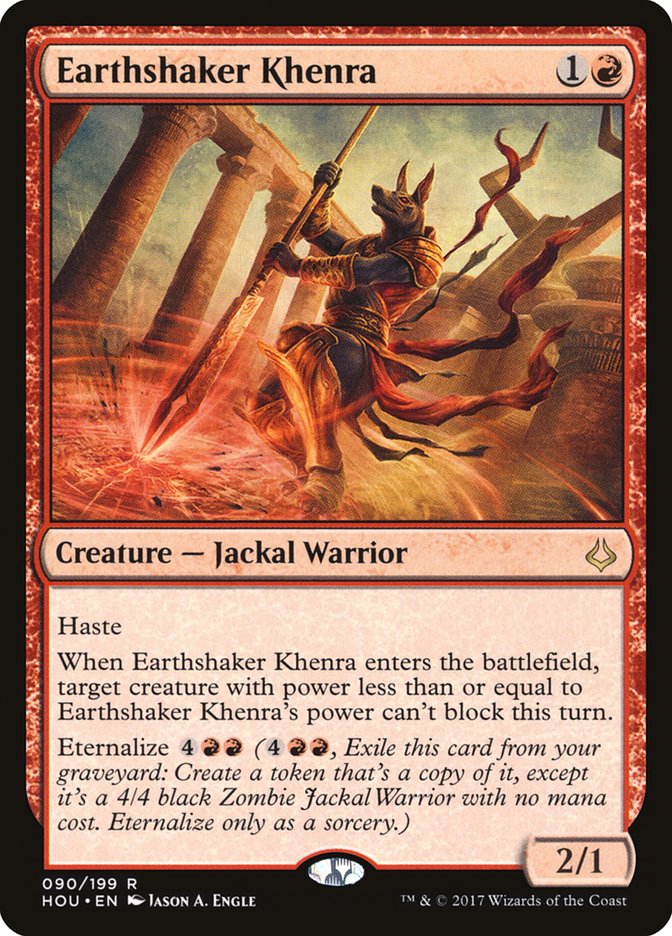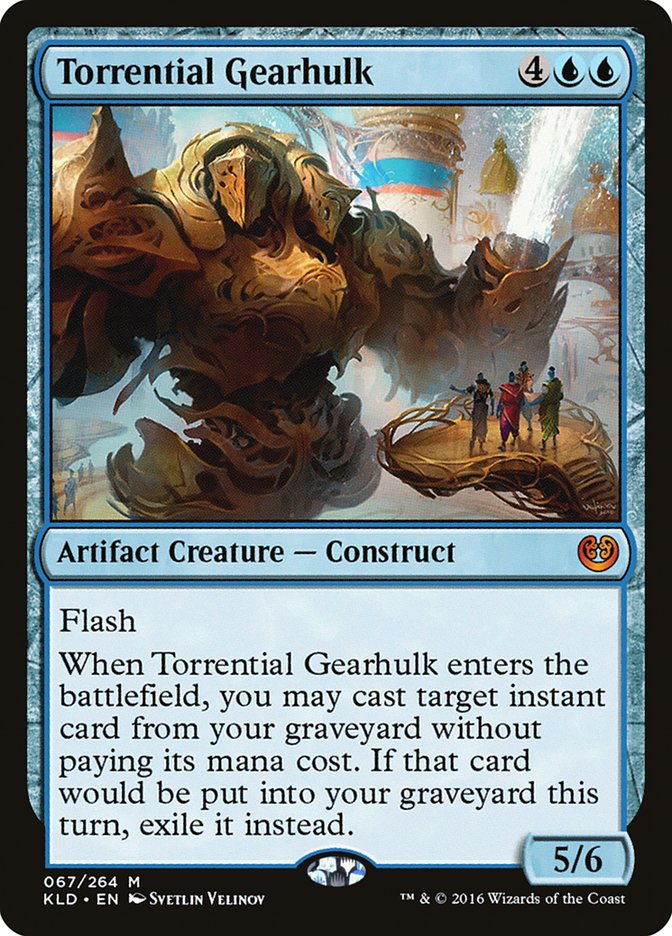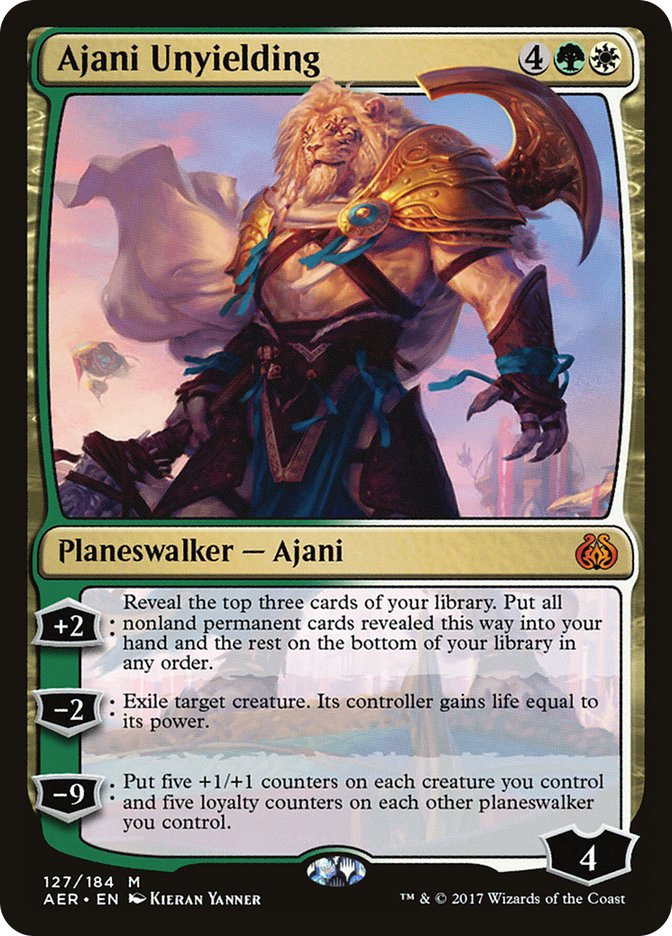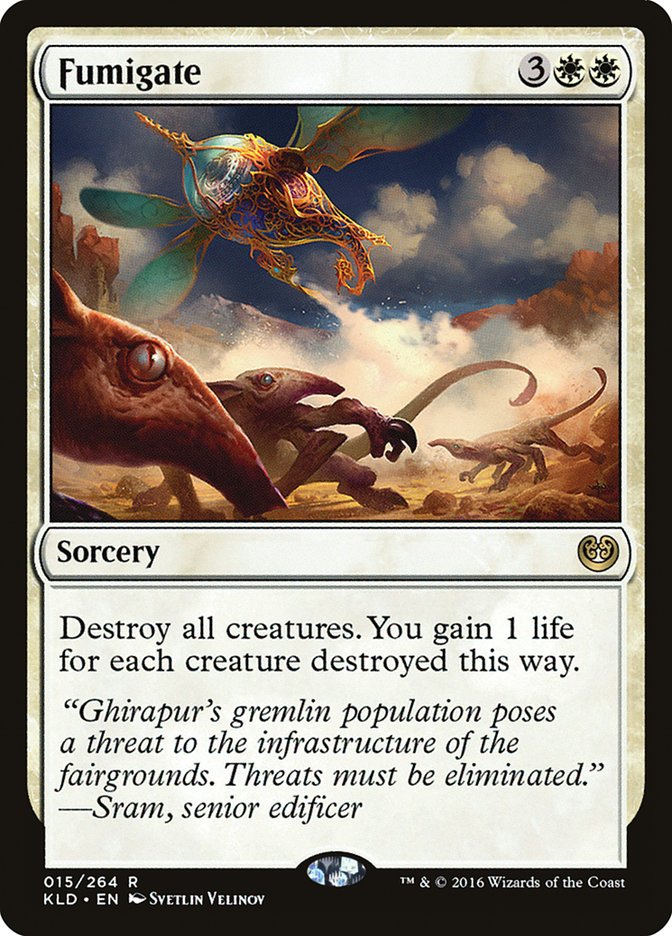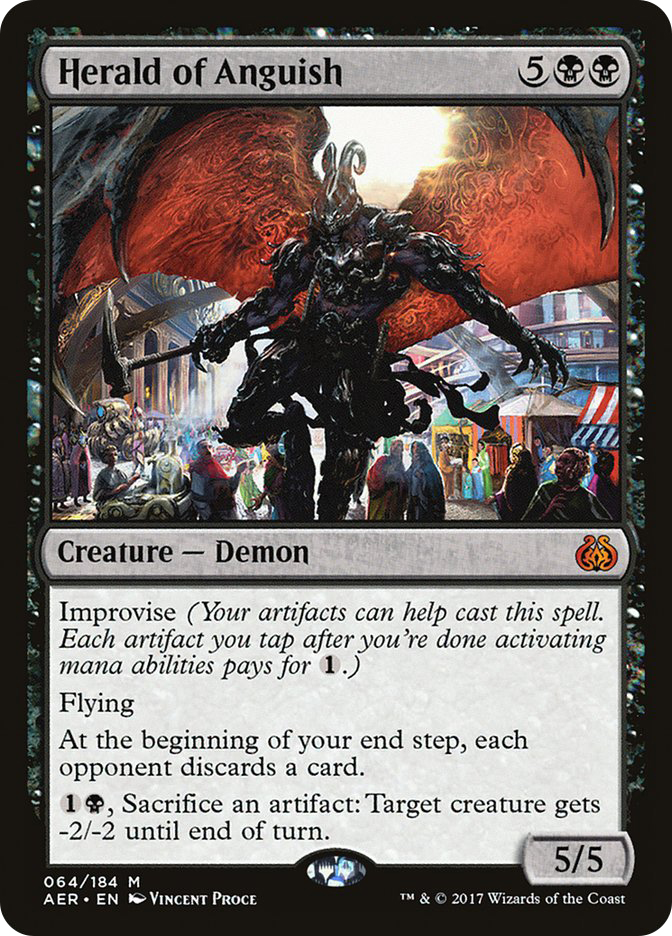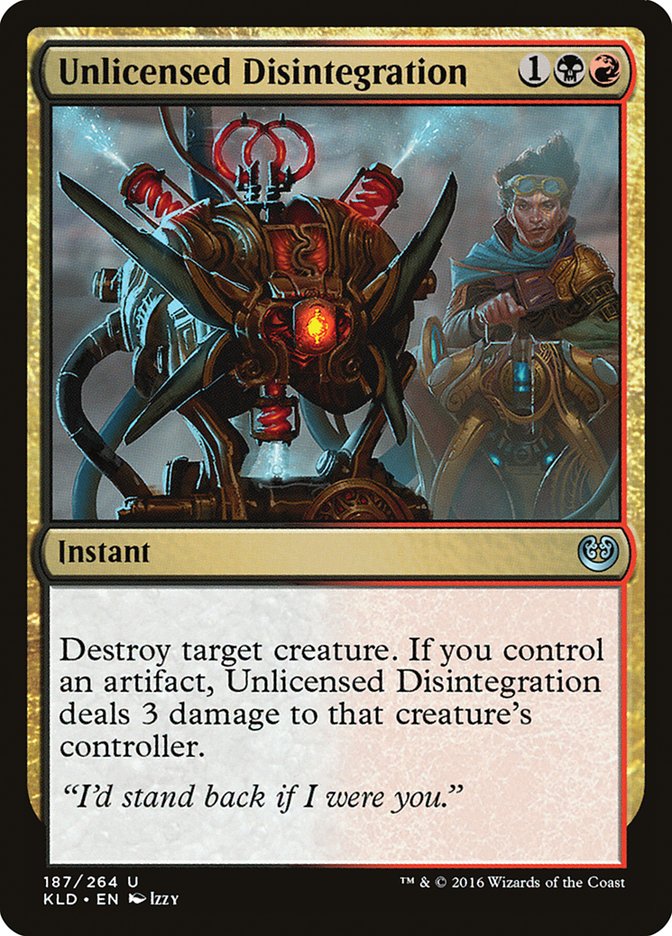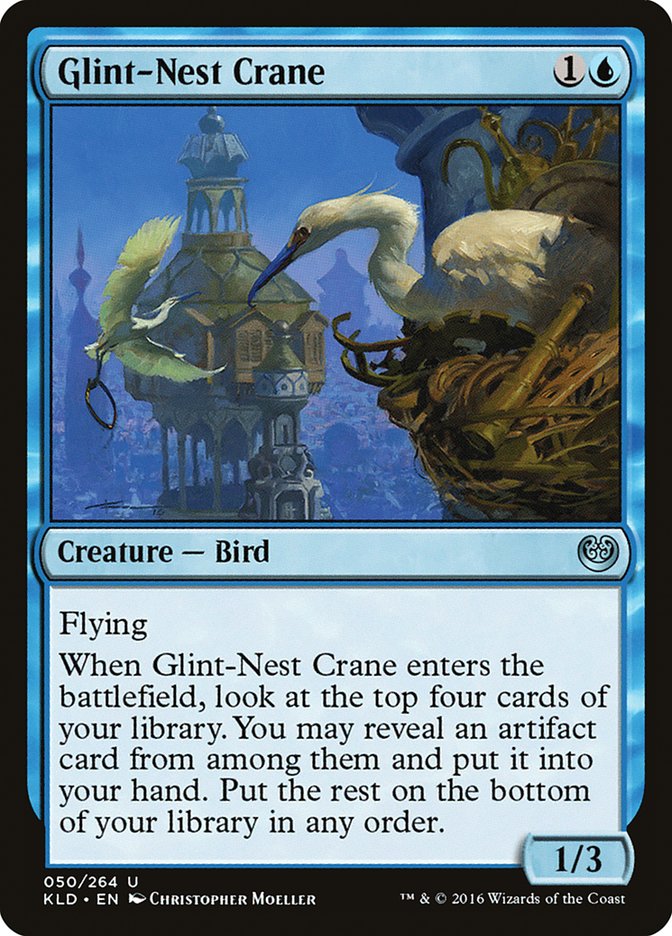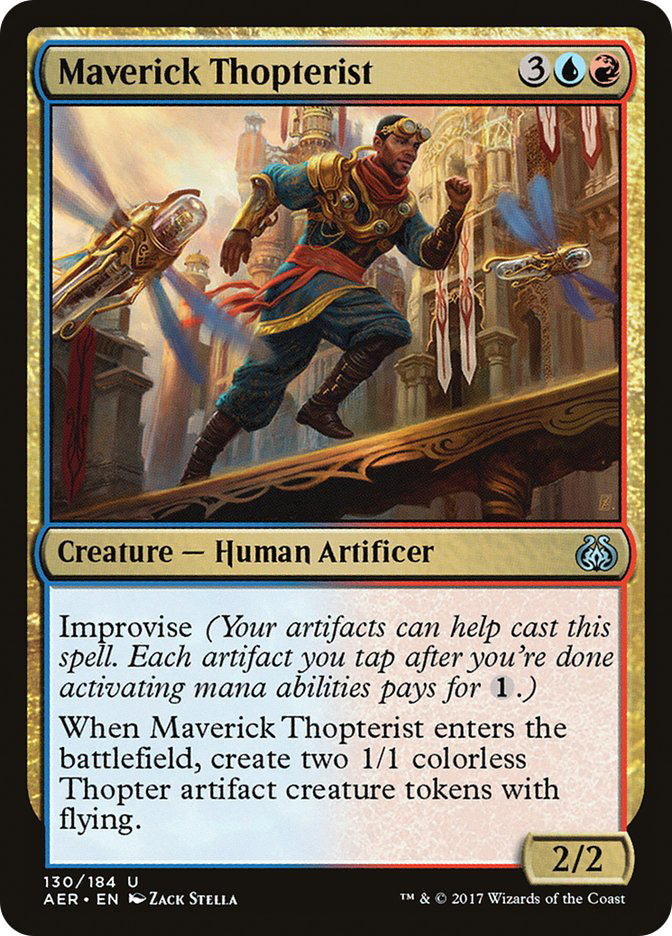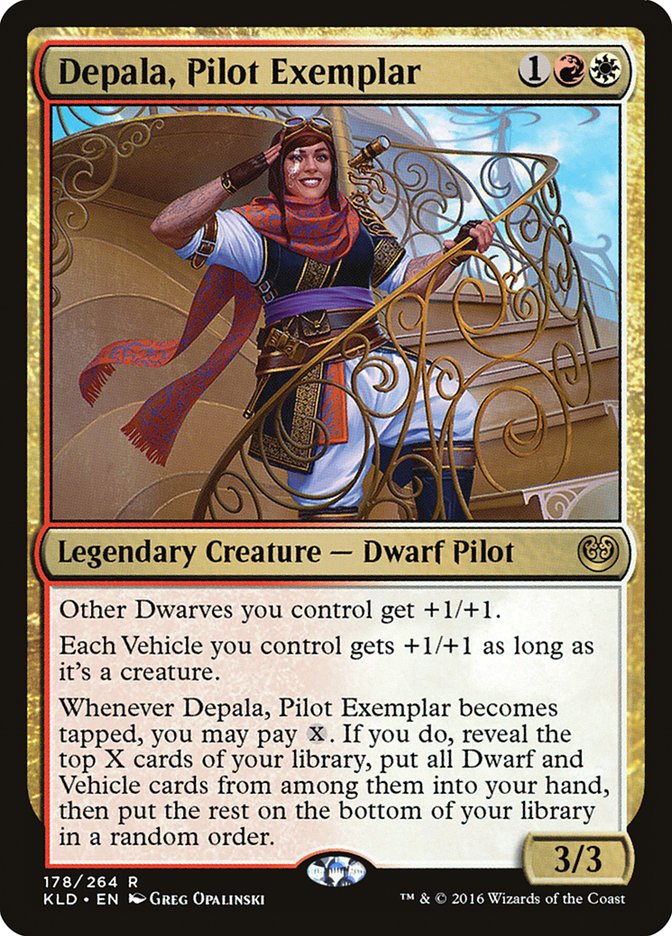We’re so close. #SCGDFW is this weekend, and with it, the release of Ixalan. We’re about to enter a world of Dinosaurs and Pirates…or, at least for the time being, Ramunap Red and Temur Energy. Those two decks are likely to be a huge portion of the metagame in Dallas because they are the two most successful decks from last season that survived rotation.
The early weeks of a post-rotation Standard format are often dominated by those survivor decks, with a healthy portion of the field bringing decks built around new cards. These are the decks and cards that naturally draw the most hype because everyone is excited about the shiny new toys yet cognizant of the bogeymen that await them.
But there’s a third important angle that often goes unnoticed: revisiting old cards. I’ve stressed this notion before, but it bears repeating because there are plenty of cards from Kaladesh and Amonkhet blocks that can finally shine because the format has changed so dramatically from rotation.
There’s a lot of talk about how to leverage the powerful Dinosaurs in Ixalan, with a ramp strategy being one of the top contenders. Collins Mullen nearly took the last trophy in Hour of Devastation Standard with a G/W Ramp deck that could easily be a home for the likes of Carnage Tyrant and Wakening Sun’s Avatar, but it also looks to me like a home for Ajani Unyielding.
The powerful planeswalker curves perfectly with Fumigate after accelerating on turn 3, at which point it can dig you toward a Wakening Sun’s Avatar to answer your opponent’s second wave. It gives the deck another clean answer to Hazoret the Fervent, the primary threat that your sweepers miss. The ultimate ability isn’t particularly exciting, but the other two are good enough that the card should draw some interest.
Without Thraben Inspector, the deck may be a little soft to Ramunap Red, but Merfolk Branchwalker does a good impression of our favorite detective and Kinjalli’s Caller could serve as a great early blocker with some built-in acceleration. You could even eschew Fumigate entirely and focus more on Dinosaurs, turning Wakening Sun’s Avatar into a Plague Wind. Regardless of your choice of direction, I think Ajani Unyielding is a key piece to look to if these decks are to succeed.
Little Gideon didn’t get much respect last season, since it was overshadowed by big brother Gideon, Ally of Zendikar, but with Battle for Zendikar finally out of Standard, it’s time to start thinking about what this card can do.
Since Gideon of the Trials’s +1 ability isn’t particularly useful for aggressive strategies, Gideon of the Trials slots better into control decks. With Duress, Spell Pierce, and Negate all in the format, purely reactive control decks are going to have some trouble, and the best way to insulate yourself against these spells is to get a little aggressive and punish players that try to become overly disruptive.
Granted, Gideon of the Trials does fall victim to these cards, but it’s not often that opponents will use them in the early turns. If you can trade a removal spell on Turn 2 and land Gideon on Turn 3, you’ve immediately put your opponent in a position where they are forced to act and don’t have the luxury of sequencing their disruption ideally. Thus, you are able to operate your normal gameplan more freely as your opponent devotes time and resources to answer a card that isn’t central to your plan.
You can also play Gideon of the Trials in a midrange deck knowing that it can seamlessly switch between offense and defense. Perhaps something like this:
Creatures (10)
Planeswalkers (10)
Lands (26)
Spells (14)
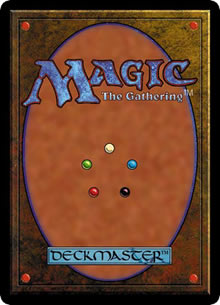
There’s nothing fancy going on here, just efficient creatures, removal spells, and planeswalkers to gain card advantage. Gideon of the Trials goes a long way toward protecting Huatli, Warrior Poet, which can set up some huge attacks when you want to turn the corner. Glorybringer could be a problem, which is why I’ve tried to support Harnessed Lightning enough to turn it into a reliable four-damage spell when necessary.
I’m also worried about the mana, given how color-intensive some of the cards in the deck are, but Veteran Motorist should go a long way toward smoothing out your draws while also functioning nicely in combat. The move of Mardu Vehicles toward a midrange deck meant Veteran Motorist has also been overlooked as a flat-out efficient card, especially if there aren’t a lot of Walking Ballistas floating around.
Let’s Improvise!
Energy decks have been very successful in large part due to how good the mana all the variants of the deck have with Attune with Aether and Aether Hub. With several cycles of dual lands leaving Standard, I’m inclined to look at the other five-color land available in Standard: Spire of Industry.
The loss of Thraben Inspector means Spire of Industry isn’t as reliable in its traditional shells, but Renegade Map does a reasonable Attune impression and starts down a path of abusing improvise. As a cost-reduction mechanic, improvise was well-hyped but failed to live up to expectations, although it wasn’t for lack of trying on my part.
That deck ended up just short of being viable, and while there aren’t a lot of new tools in Ixalan for the archetype, I think it has some good things going for it. First, Herald of Anguish matches up very well against much of the format, containing both Glorybringer and Hazoret the Fervent while potentially dominating the battlefield against any creature deck.
Second, it’s the best home for Unlicensed Disintegration, which is still an incredibly powerful removal spell, even in a deck that isn’t incredibly aggressive. In the below deck, it functions to let you turn the corner quickly while you race in the air:
Creatures (10)
Planeswalkers (3)
Lands (21)
Spells (26)

The result is a synergy-laden midrange deck that has powerful and flexible removal, threats that are difficult to answer one-for-one, and card advantage from Tezzeret the Schemer and Treasure Map. Whether the latter is better than Metalworker’s Puzzleknot is unclear, especially because for some inexplicable reason Tezzeret doesn’t produce Treasure tokens, but its upside is still quite high, so I’m more than willing to give it a shot.
I wanted to incorporate Glint-Nest Crane as an early defensive measure, but there aren’t enough artifacts I wanted to play to make the trigger reliable. Honestly, that may be a positive, since, despite being an artifact-centric deck, it’s not vulnerable to artifact removal, which is plentiful in Standard should this deck prove competitive.
Maverick Thopterist is another unheralded card that this deck does a great job of leveraging. It does a little of everything by fueling the improvise engine, blocking early aggressive creatures, crewing Aethersphere Harvester, and attacking planeswalkers. That kind of flexibility is important in any midrange strategy, so don’t underestimate it.
As I mentioned earlier, Thraben Inspector’s loss really does a number on Mardu Vehicles. Couple that with the loss of Gideon, Ally of Zendikar, and Heart of Kiran decks must be retooled to compete. Depala, Pilot Exemplar is a powerful card in its own right and plays nicely with Veteran Motorist, which should find its way back into these decks.
Importantly, Depala gives these decks a way to dig for more artifacts, thereby allowing it to more consistently turn on cards like Toolcraft Exemplar, Inventor’s Apprentice, and Spire of Industry. There aren’t many good options for additional artifacts to turn on those synergies, so gaining more consistent access to the ones you have is the next best option. Heart of Kiran is such a powerful card that I find it hard to believe it won’t see play this season, and building on the Dwarf synergies looks to me to be the way to go.
Free to Good Home
These next cards don’t have specific homes as of yet, but I still think they are important to keep in mind when building your decks for the early weeks of Ixalan Standard.
The switch from Grasp of Darkness to Walk the Plank has the obvious downside from instant speed to sorcery, but also importantly eliminates one of the best answers to Hazoret the Fervent. Die Young can be the latter while being easier on the mana for most decks, so long as you have some energy enablers. Four-Color Energy lists that are splashing for The Scarab God could use it, should they be particularly concerned about Ramunap Red.
Despite Ramunap Red being among the most successful decks in the format last season, perhaps the best sideboard card against them went largely unplayed. It answers everything from Earthshaker Khenra and Ahn-Crop Crasher to Chandra, Torch of Defiance and Glorybringer as efficiently as possible. It doesn’t get better than that.
But it didn’t answer Dread Wanderer and Scrapheap Scrounger, and we had access to Magma Spray that could serve well in the early-game against both decks. Zombies forced the hand of many deckbuilders this summer, but that deck isn’t going to be viable after rotation.
There may be other aggressive decks that emerge, perhaps focused around one of the new tribes of Ixalan, or based around generically powerful cards like Dread Wanderer and Scrapheap Scrounger. But in the meantime, Ramunap Red is going to be incredibly powerful, and they are all going to have the option of going bigger after sideboarding. Having a card that covers you regardless of how they sideboard is invaluable, so until other decks become permanent fixtures of the metagame, take advantage and play the most powerful, narrow cards you can get away with.
When Lingering Souls Delver decks became popular after Pro Tour Dark Ascension, Corrosive Gale became a popular sideboard hoser for the archetype, sweeping away piles of Spirit tokens as well as the otherwise impenetrable combo of two Drogskol Captains. The deck quickly faded away in favor of the U/W Delver deck we all remember, against which Corrosive Gale was not nearly as effective, but that situation may be recurring now.
Pirates is one of the more promising tribes in Ixalan, and taking to the air with them is a great strategy. Unfortunately for Skies devotees, we have a Hurricane effect in Standard that is easy to overlook. It’s importantly an instant, so you can cast it after they tap out on your end step for a threat, at which point the back half can clear away any Ruin Raiders or Fathom Fleet Captains that are left. If your opponent is on a Favorable Winds build, then the back half may not even be necessary.
Midrange decks that are in danger of being tempo-ed out by the Pirate menace should be looking to this card as a potential game-breaker in the matchup.
It takes a lot of discipline to pry yourself away from your new toys to look over the rusty pile of junk in the corner, but the rewards are there for those who can take advantage of the surprisingly predictable metagame that emerges after a rotation. As they say, one Pirate’s trash is another Pirate’s Treasure.


